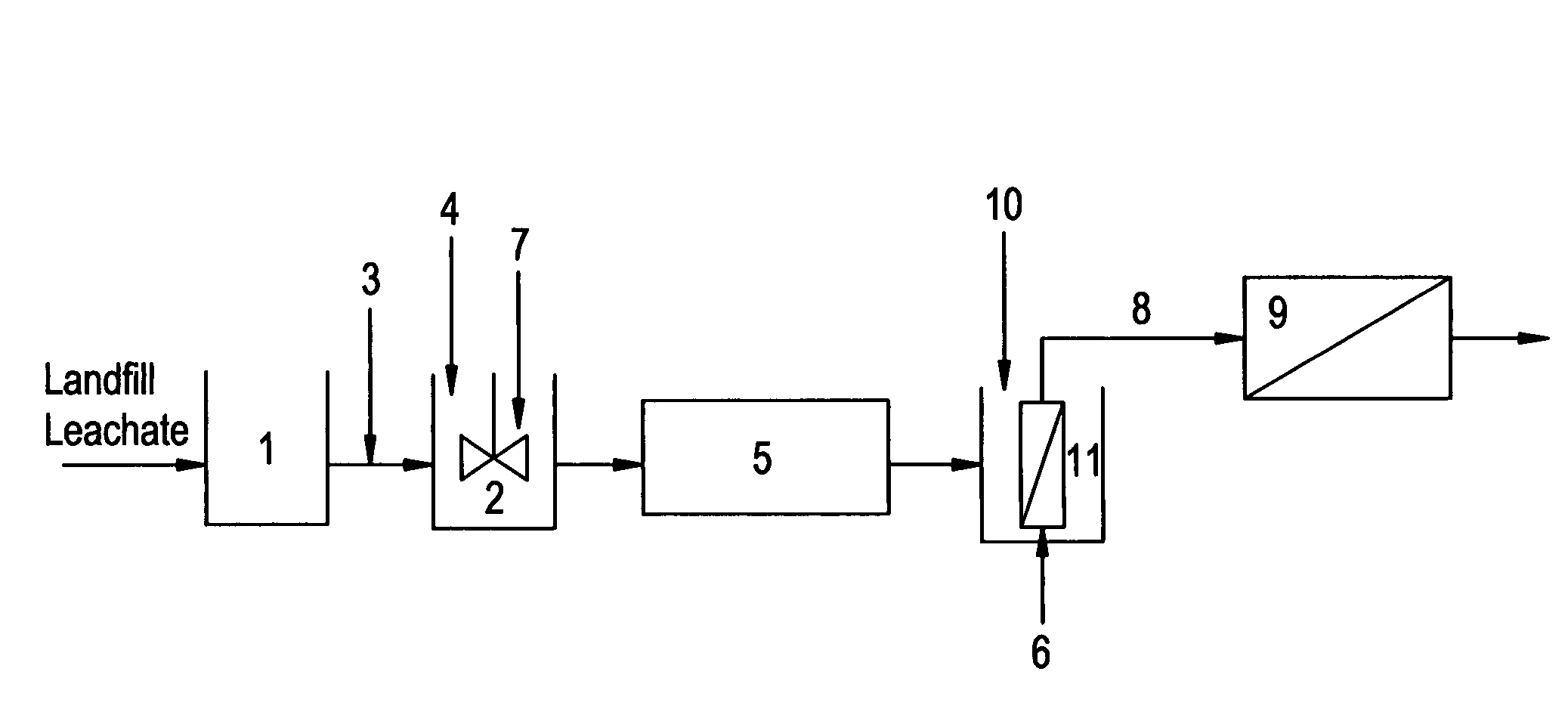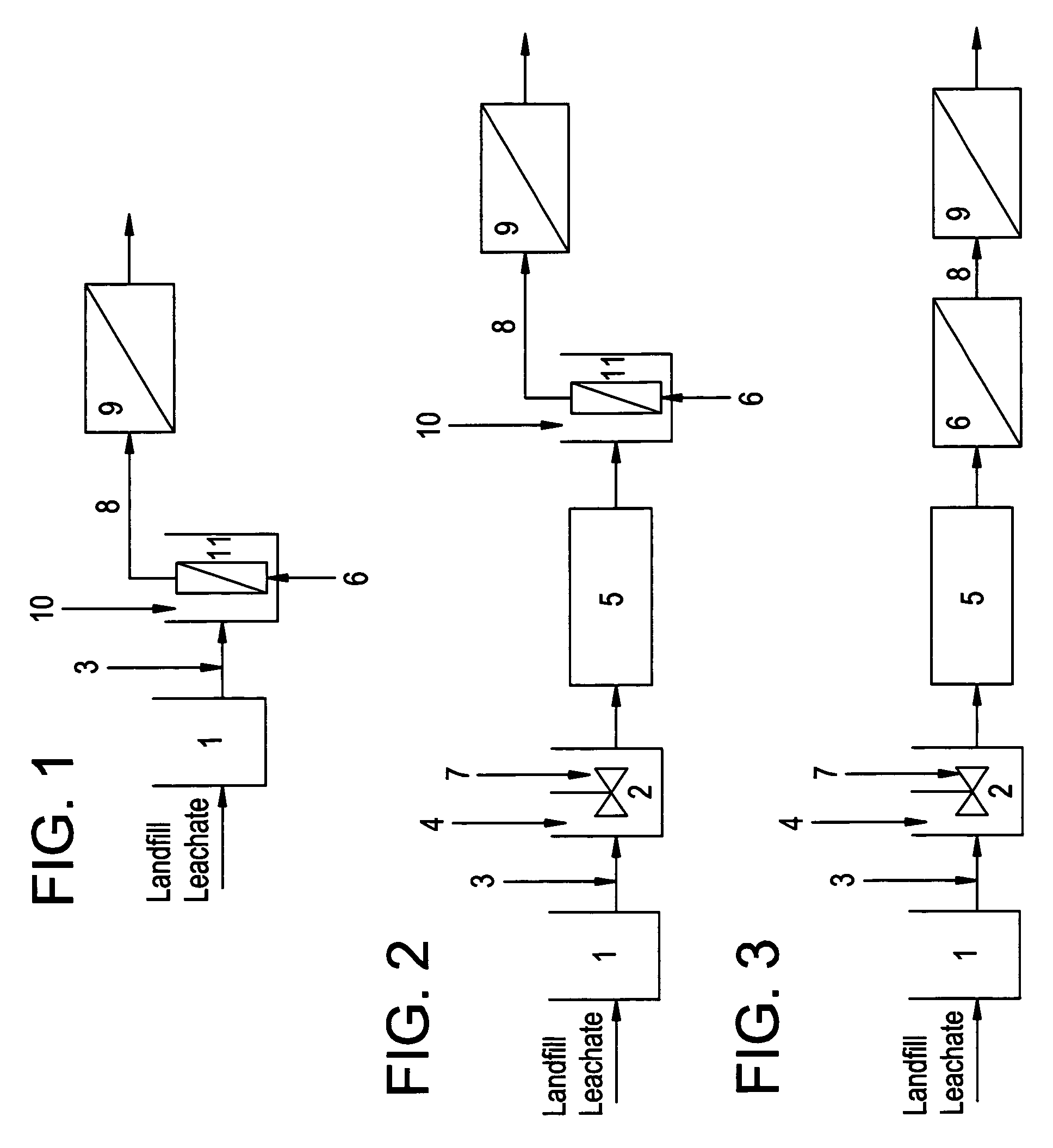Method of improving performance of ultrafiltration or microfiltration membrane process in landfill leachate treatment
a technology of ultrafiltration and microfiltration membranes, applied in the field of methods, can solve the problems of increasing the frequency of membrane cleaning, reducing the flux of membranes, and unable to discharge landfill leachate in a river or other water body without treatmen
- Summary
- Abstract
- Description
- Claims
- Application Information
AI Technical Summary
Problems solved by technology
Method used
Image
Examples
example 1
[0044]Landfill leachate obtained from the eastern United States and contained in a 500 ml jar was treated by mixing with various dosages of Product A (Core shell copolymer of DMAEA.MCQ, and AcAm, cationic with 50% mole charge) and Product B (Copolymer of DMABA.MCQ and AcAm, cationic with 50% mole charge), for about 2 minutes. The treated leachate was then settled for 10 minutes, and the turbidity of supernatant was measured. The colloidal material, which is the main cause of higher turbidity in leachate, was coagulated and flocculated by this method.
TABLE 1Turbidity (NTU) of treated and settledlandfill leachate from eastern USPolymer Dosage(ppm) based uponactivesProduct AProduct B0 (Untreated)359 5025639010017629615099207200681592506111850026.4
[0045]As shown in Table 1, there is over 83% and 90% reduction in turbidity after treatment with 250 ppm Product A and 500 ppm Product B, respectively. Therefore, if leachate is treated by, e.g. 200 ppm Product-B (concentration lower than that...
example 2
[0046]A leachate sample obtained from south-eastern US was studied in the same manner as in Example 1. The leachate sample was treated with Polymer A (same as in Example 1), Polymer C (Copolymer of DMAEA.MCQ, DMAEA.BCQ and AcAm, cationic with 35% mole charge), and Polymer D (Polydiallyldimethylammoniumchloride, cationic with 100% mole charge). Turbidity removal results are shown in Table 2.
TABLE 2Turbidity (NTU) of treated and settledlandfill leachate from south-eastern USPolymer Dosage(ppm)Product-AProduct-CProduct-D0 (Untreated)21102.58203.5100 3.3
[0047]As shown in Table 2, over 83% of turbidity was removed by treatment with Product A, C or D, although at different dosages.
PUM
 Login to View More
Login to View More Abstract
Description
Claims
Application Information
 Login to View More
Login to View More - R&D
- Intellectual Property
- Life Sciences
- Materials
- Tech Scout
- Unparalleled Data Quality
- Higher Quality Content
- 60% Fewer Hallucinations
Browse by: Latest US Patents, China's latest patents, Technical Efficacy Thesaurus, Application Domain, Technology Topic, Popular Technical Reports.
© 2025 PatSnap. All rights reserved.Legal|Privacy policy|Modern Slavery Act Transparency Statement|Sitemap|About US| Contact US: help@patsnap.com


